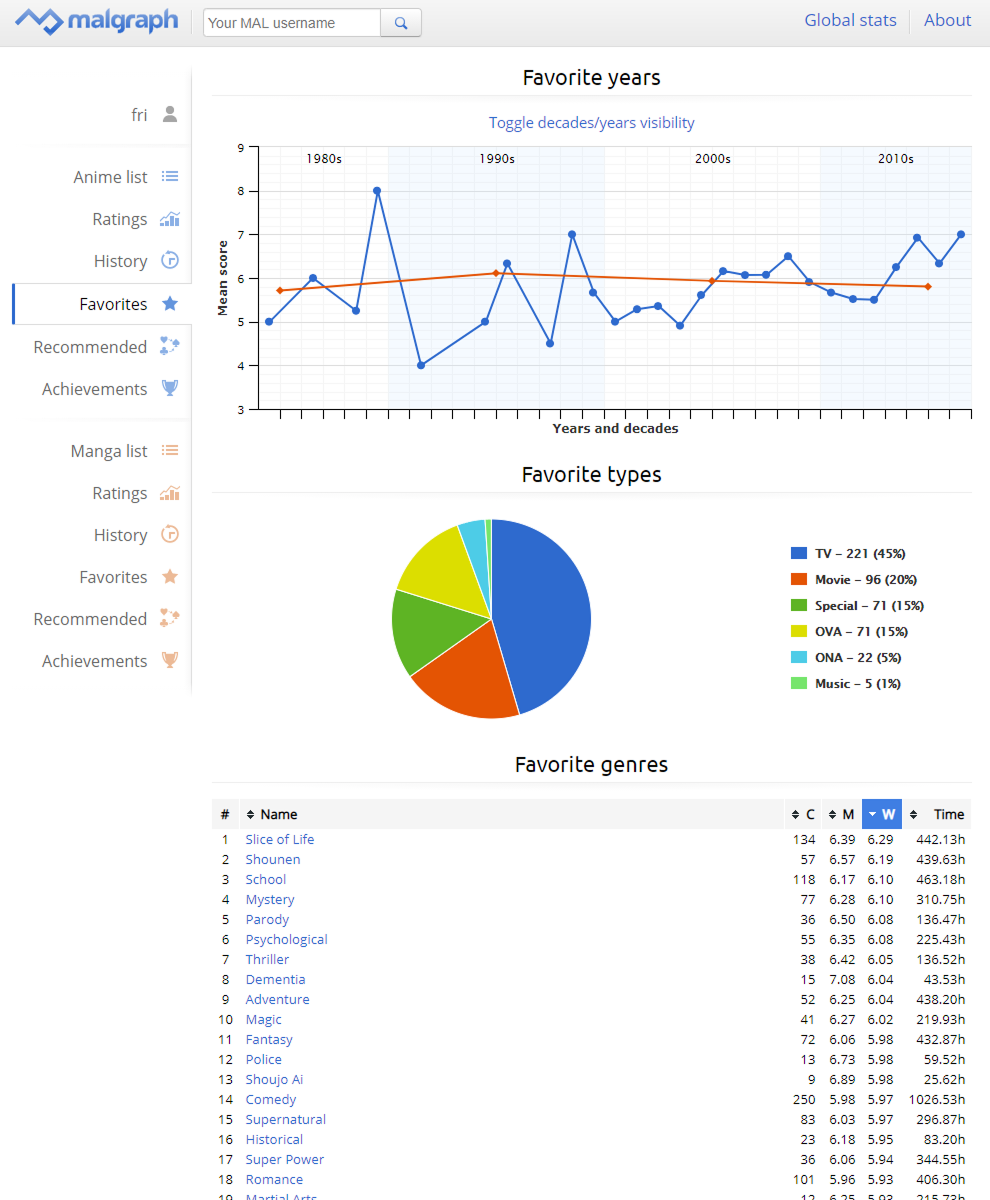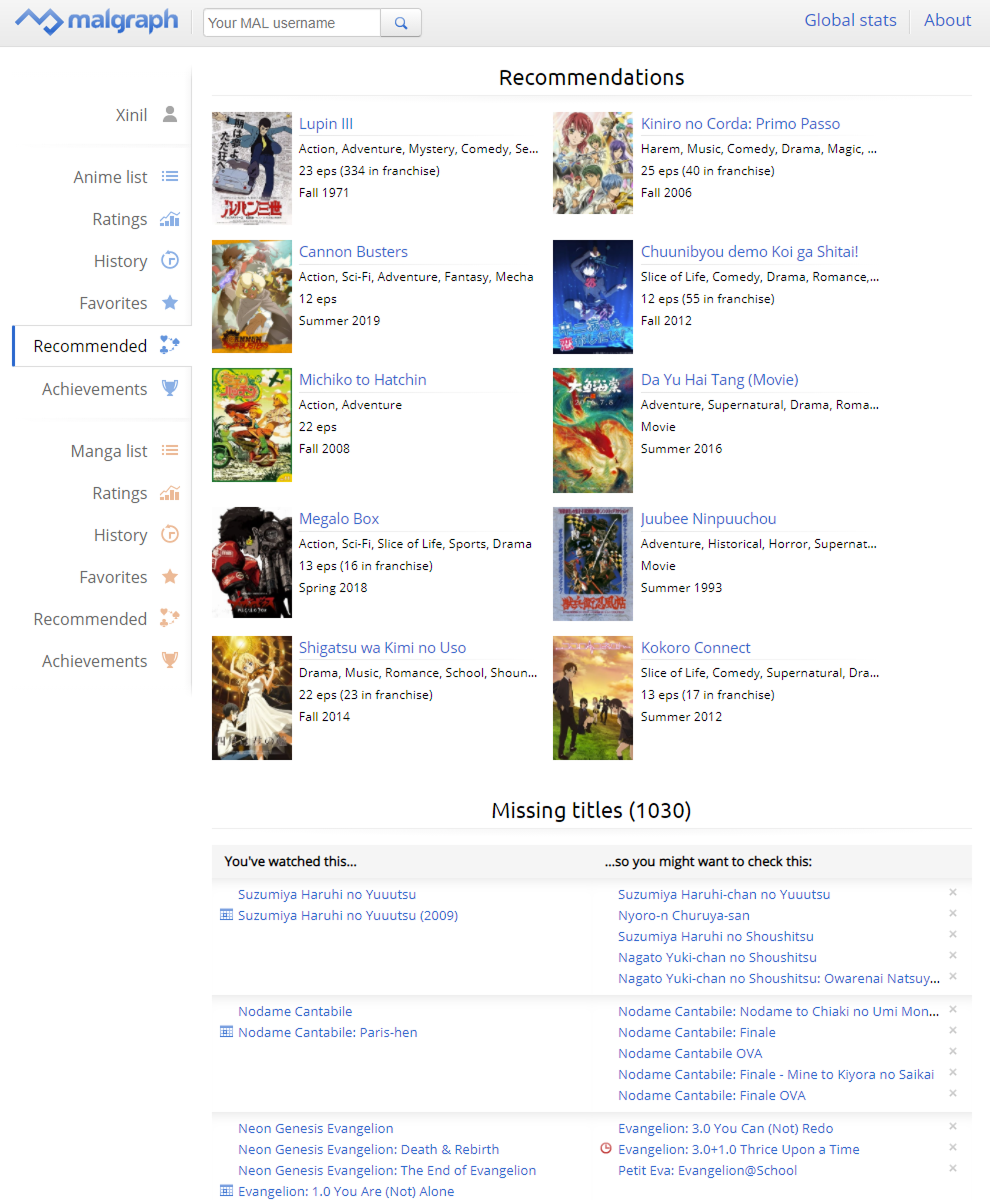MALgraph
MALgraph is an open source web application working in tandem with a user's profile on MyAnimeList (MAL)—a website for creating lists of animated Japanese shows/movies or completed comics and light novels.
Once one's MAL username is entered, MALgraph shows detailed analysis, statistics and recommendations based on the specified user's anime and manga data.
-
Time
- 2011–2015
-
My roles
- UX/UI Designer
- Community Manager
-
Team
- Me as a designer
- 1 full-stack developer
-
Outcomes
- Exceeded 200 000 unique users
- Impacted the users to use the 10/10 rating less often
- Designed new monetization paths for the parent website
- Got 159 stars and 37 forks on GitHub
- Built a strong community eager to help







